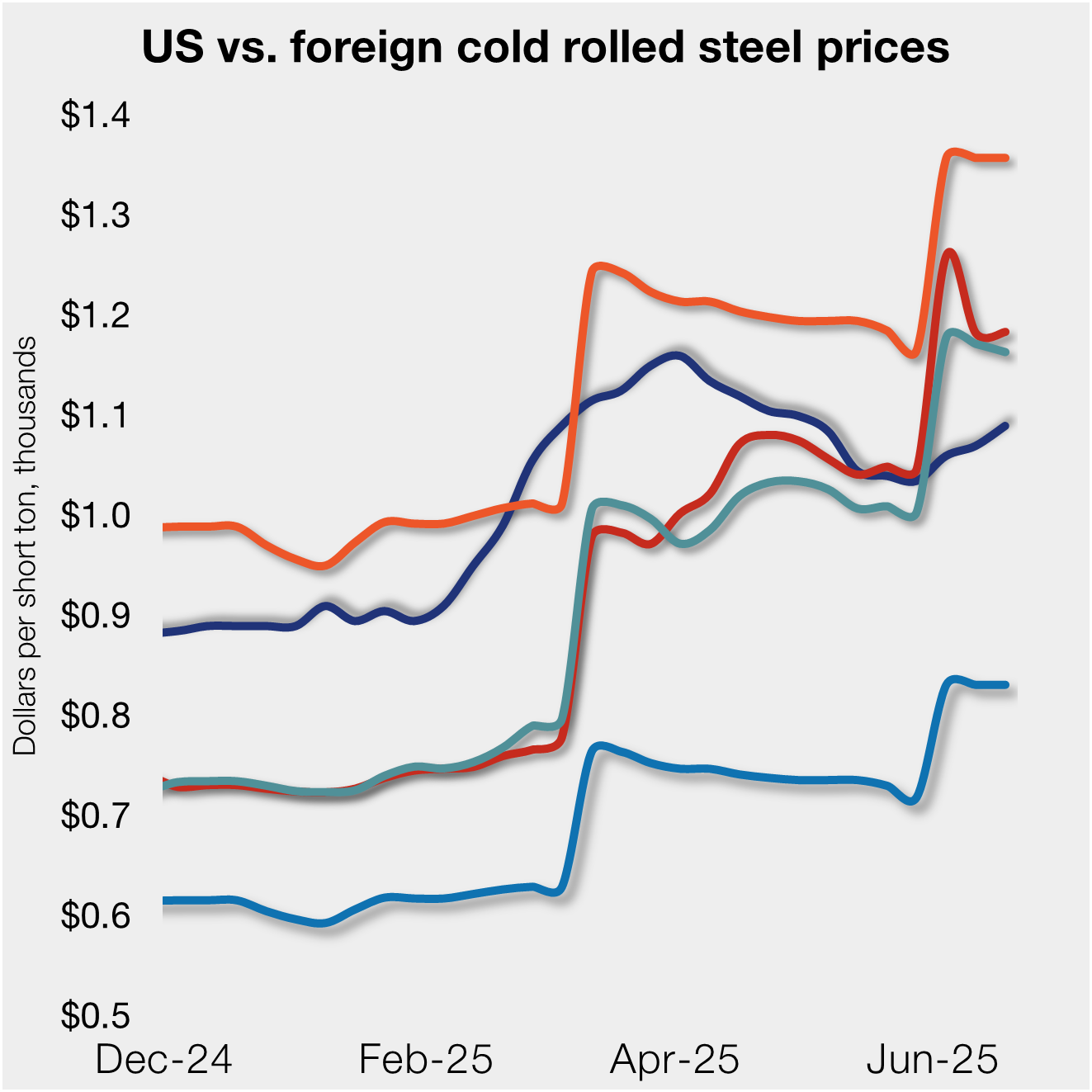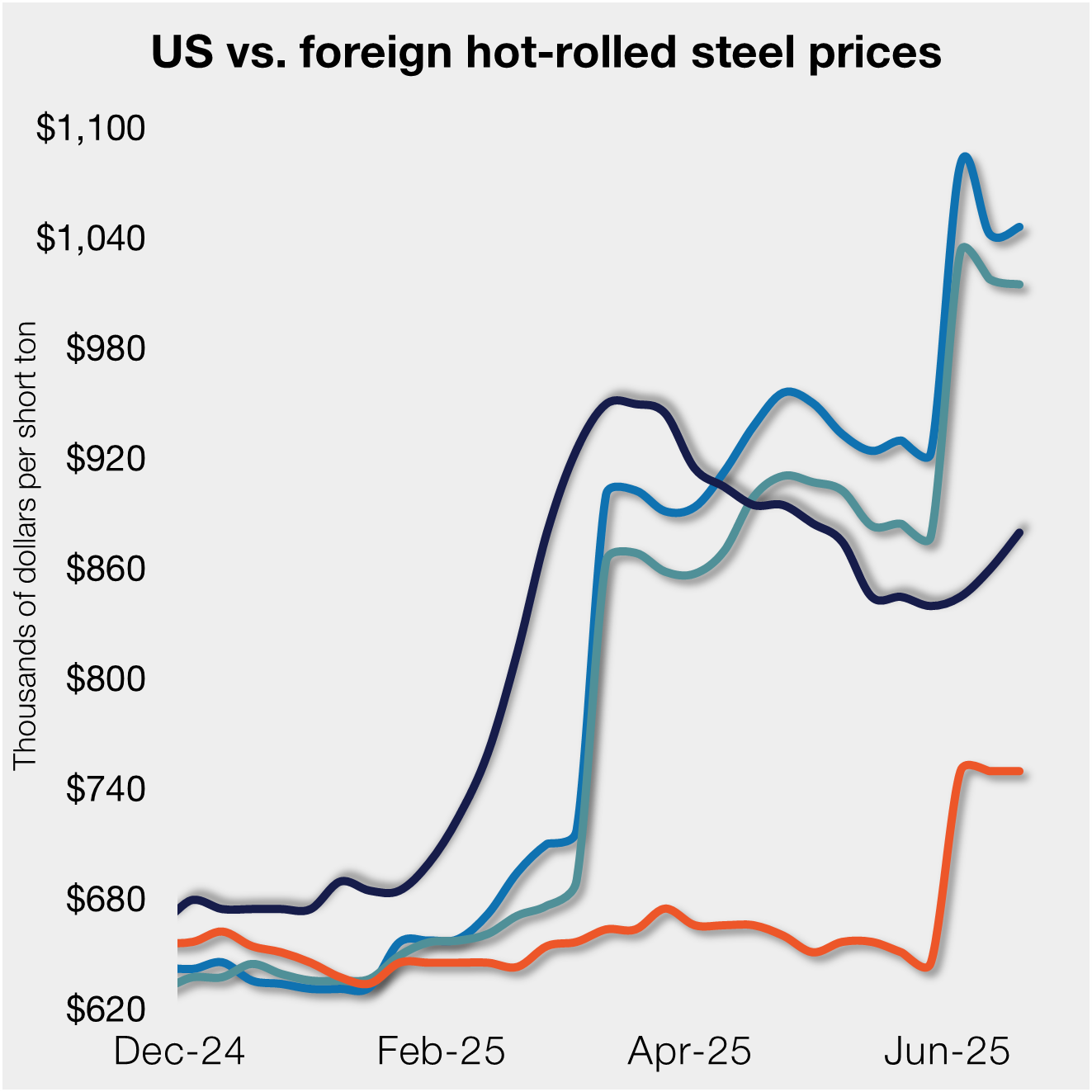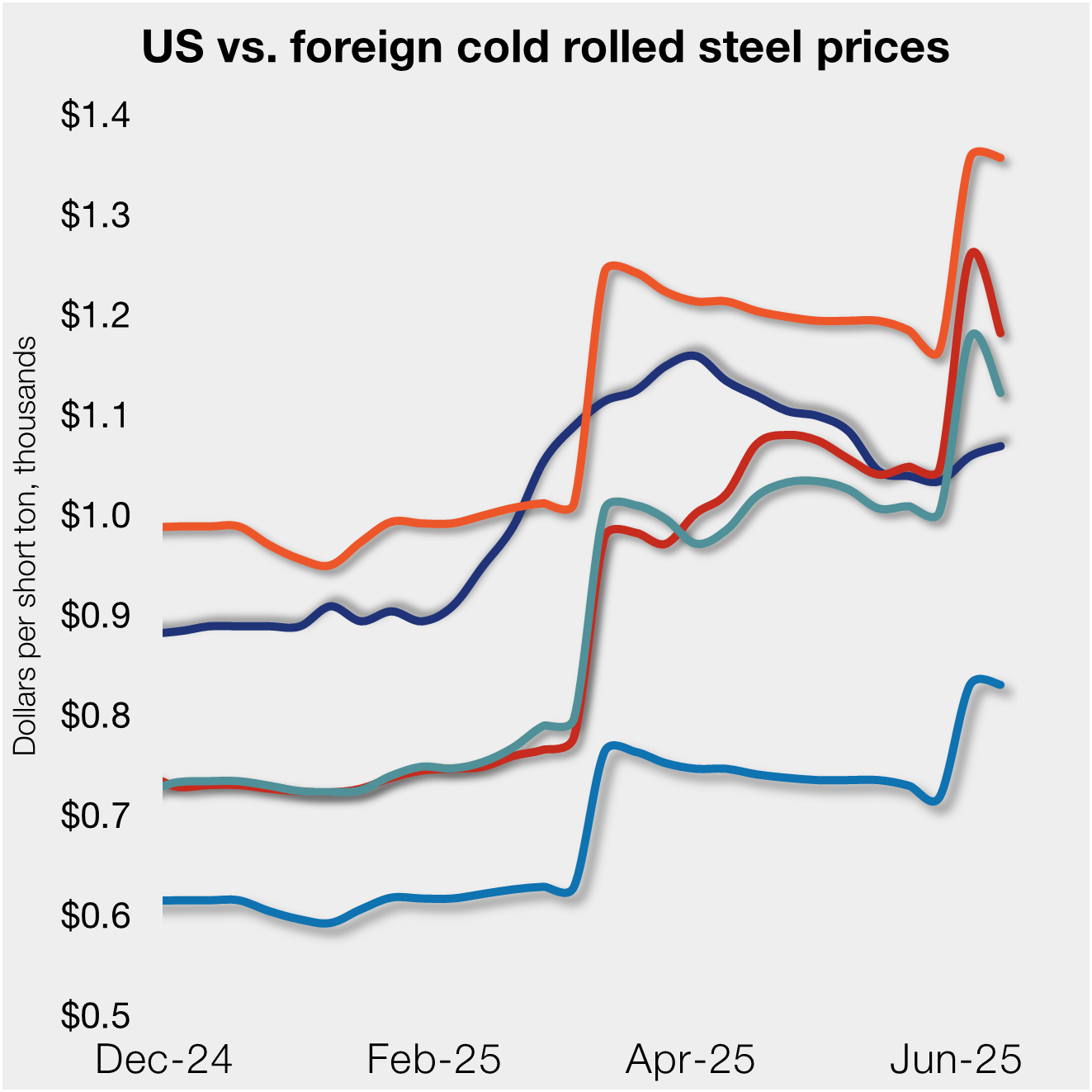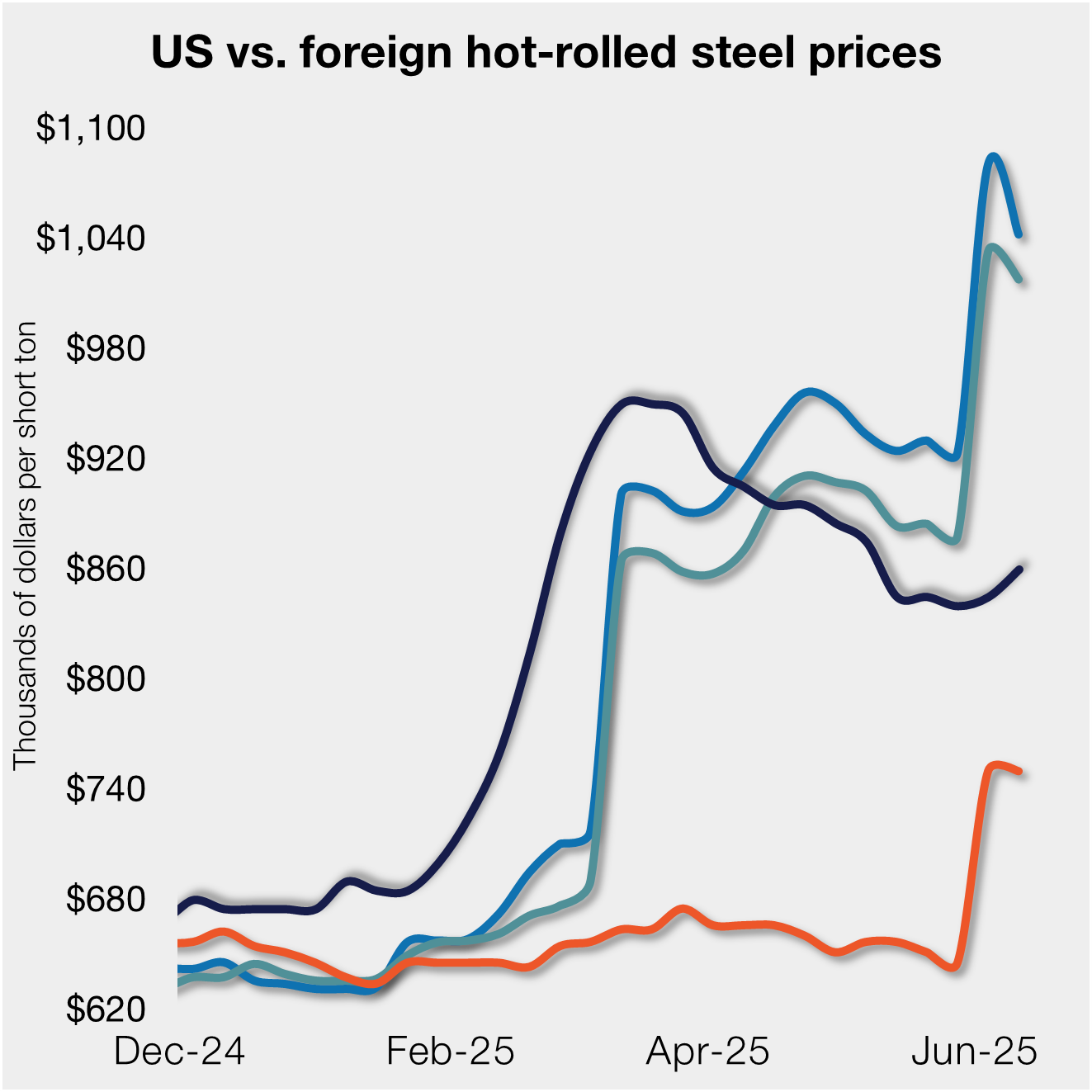International Steel Prices

World Export vs. Domestic HRC Price Spread Unchanged
Written by Brett Linton
August 14, 2014
The following is a “hypothetical” calculation of the spread between world hot rolled export prices and domestic (USA & Canada) hot rolled prices. Actual HRC price spreads can vary based on freight costs, trader margins and other factors. SMU compares the world export price with adders for freight, handling, trader margin, etc. against the spot (FOB Mill) domestic hot rolled price using the SMU Hot Rolled Index for this week.
The world export price for hot rolled bands is at $500 per net ton ($551 per metric ton) according to data released by SteelBenchmarker earlier this week. This is the same as compared to two weeks ago and is $6 per ton lower compared to mid-July.
With an estimated $70 per ton added in order to get the steel to ports in the United States (freight, handling, and trader margin), the additional costs put the true world export price at approximately $570 per ton CIF USA Port.
The latest Steel Market Update hot rolled price average is $675 per ton, unchanged from two weeks ago and up $5 per ton compared to mid-July. The theoretical spread between the world export price and the SMU US HRC price is $105 per ton ($175 prior to freight and other costs being included), unchanged over two weeks ago and $11 per ton more than mid-July. This remains the highest price spread since mid-May 2014.
The $105 spread represents a significant change from mid-March 2014 when we had a spread of $45 per ton ($115 prior to freight and other costs being included). One year ago the spread was $67 per ton ($137 prior to freight and other costs being included).
Below is an interactive graph which you can use to compare world export prices against the SMU domestic HRC average price. We also have included a comparison with freight and traders’ costs added which gives you a better indication of the true price spread (assuming the U.S. offers are not being bumped up by the foreign producing mills or trading companies). You will need to read this article on our website in order to see and interact with the graphic. If you need assistance with either logging in or navigating the website, please contact our office at 800-432-3475 or info@SteelMarketUpdate.com.
{amchart id=”130″ Domestic vs. Foreign Hot Rolled Pricing- Steel Benchmarker World China Europe}

Brett Linton
Read more from Brett LintonLatest in International Steel Prices

Higher US CR prices inch closer to EU, Japanese tags
US cold-rolled (CR) coil prices continued to tick higher this week, while offshore markets were mixed.

Stacked S232 keeps US HR prices below EU
US hot-rolled coil prices crept up again this week but still trail imports from Europe.

Doubled S232 lifts EU, Japanese CR prices over US tags
US cold-rolled (CR) coil prices edged up again this week, and most offshore markets moved in the opposite direction. But the diverging price moves stateside vs. abroad did little to impact pricing trends. The bigger impact was from Section 232, which were doubled to 50% as of June 3. The higher tariffs have resulted in […]

CRU: Sheet demand remains weak, tariff changes again alter markets
Subdued demand has continued to weigh on steel sheet prices globally.

Higher S232 keeps US HR prices at a discount to EU
Domestic hot-rolled (HR) coil prices edged up marginally again this week, while offshore prices ticked down.
